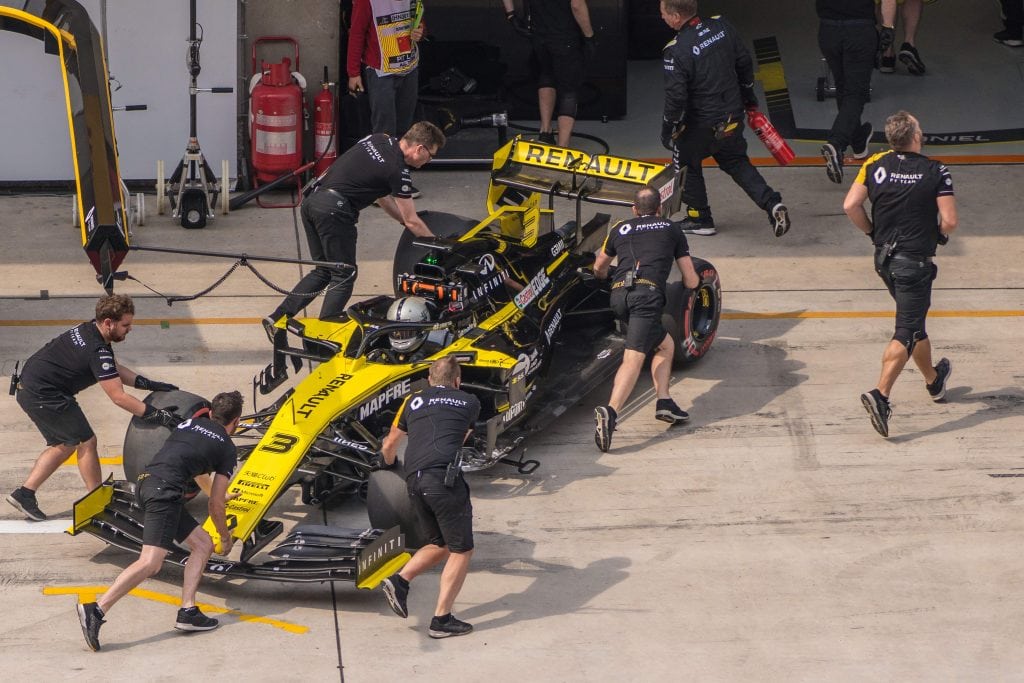In the latest epsiode of the Evolve to Succeed podcast, Jurriaan Kamer—author of Formula X—discusses the way Formula 1 teams are run, and how you can adopt some of the techniques into your own business.
Here are a few highlights from the podcast:
In your FASTER model, ‘A’ stands for accelerate decisions. Tell us more about that.
Very often, decision-making is a very big bottle neck in many organisations. In some places it’s hard to make a decision—it takes many meetings, it takes groups to come together to try to make a decision, and there are many different techniques to accelerate decision making.
One of the techniques that we describe in the book is that it makes sense to distinguish between reversible and irreversible decisions. And often we treat every decision as an irreversible decision; we want to be perfect, we want to be right, we want to make sure we don’t make a mistake when we make a decision, [and this] actually slows us down. If you apply [this technique] correctly, you’ll try out your decisions more often because if they are reversible, why don’t we just make more decisions and evaluate them so we learn what are the right decisions to make?

And that is a philosophy you see applies to Formula 1 teams as well?
Yeah, for sure. A lot of the decision making in F1 teams are within split seconds, are leaning towards [a philosophy of] “Well, let’s try it out, we’ll know next race if it’s going to improve us or set us back.” So there’s lots of progress focus instead of perfection focus. Their speed is so fast that they don’t have time to wait for three or four board meetings to make a decision. And one thing that is very helpful, which you also see in F1 teams, is that it makes sense to define the decision rights to certain teams and roles, to be explicit and deliberate about what this team or role can decide without needing approval from anybody else. And when decision rights are clear in the organisation, things go by themselves as well because you reduce the amount of decisions that you need alignment on with other because people are just making their decisions day-to-day.
You can see this in the pit box. If a car comes back, for example, from a practice or qualifying session, it will drive into the garage and people will just automatically start working on it—there are predefined roles and responsibilities and people know when that the car comes in, my job is to remove the right-front wheel, clean the brakes, inspect this and this and this, and then I make an autonomous decision to replace certain parts. I don’t need [approval from] the manager to do that. All the teams are working within their respective roles and decision rights.

The final letter of the FASTER model stands for?
Rhythmic learning—a cadence of recurring interaction moments. F1 teams really understand that it makes sense to have a good meeting design, an operating rhythm so to speak, a heartbeat of the organisation of interlocking conversations and gatherings of people that creates the rhythm of learning of the organisation.
For example, after the race—races are usually 90 to 120 minutes—there is a two-hour long race debrief that most of the time is longer than the actual race. And this is just one of the 50 different meetings they have pre-planned over the course of a race weekend that focuses on learning what happened and trying to gather data and insights that will help them make faster decisions the next time.
So if you think about how much time [you] spend on executing versus learning, reflecting, and designing improvements, it’s usually a small percentage that people invest in that, and it’s hard to get on the calendar and it’s like, “Oh yeah, do we really need to have that retrospective meeting or not?” but the really high-performing teams they have a rhythm, they set a rhythm, they reflect at least once a month or once every two weeks, sit down for an hour, and that’s the rhythm where conversations happen.

Taking that kind of learning back into a business environment, how can you make sure that those meetings are effective and they’re not just a talking shop or management by committee, that they are effective, that it does get an organisation into this rhythmic learning philosophy?
What is important is that every meeting has a specific purpose—what is the objective or the reason of the existence of this specific meeting? What is the conversation? Is it a decision-making meeting? Is it a prioritisation meeting? Is it unblock the weekly work meeting? What is this type of meeting, what is it about?
It’s useful to have a clear purpose for each meeting and then design the structure of the meeting accordingly … Another very helpful and simple thing to do is appoint a facilitator for every meeting. [They] may not necessarily be the ‘owner’ of the meeting or the highest in rank; often we assume that the leader is going to be running the meeting, but what I’d really like to encourage is that we all learn facilitation skills and we rotate the role of facilitator. That holds the structure and the time box and effectiveness of the meeting.
- Listen to this episode on Apple, Spotify, Stitcher and TuneIn
- Want to make sure you receive the latest insights from Evolve? Sign up to our weekly newsletter here.
